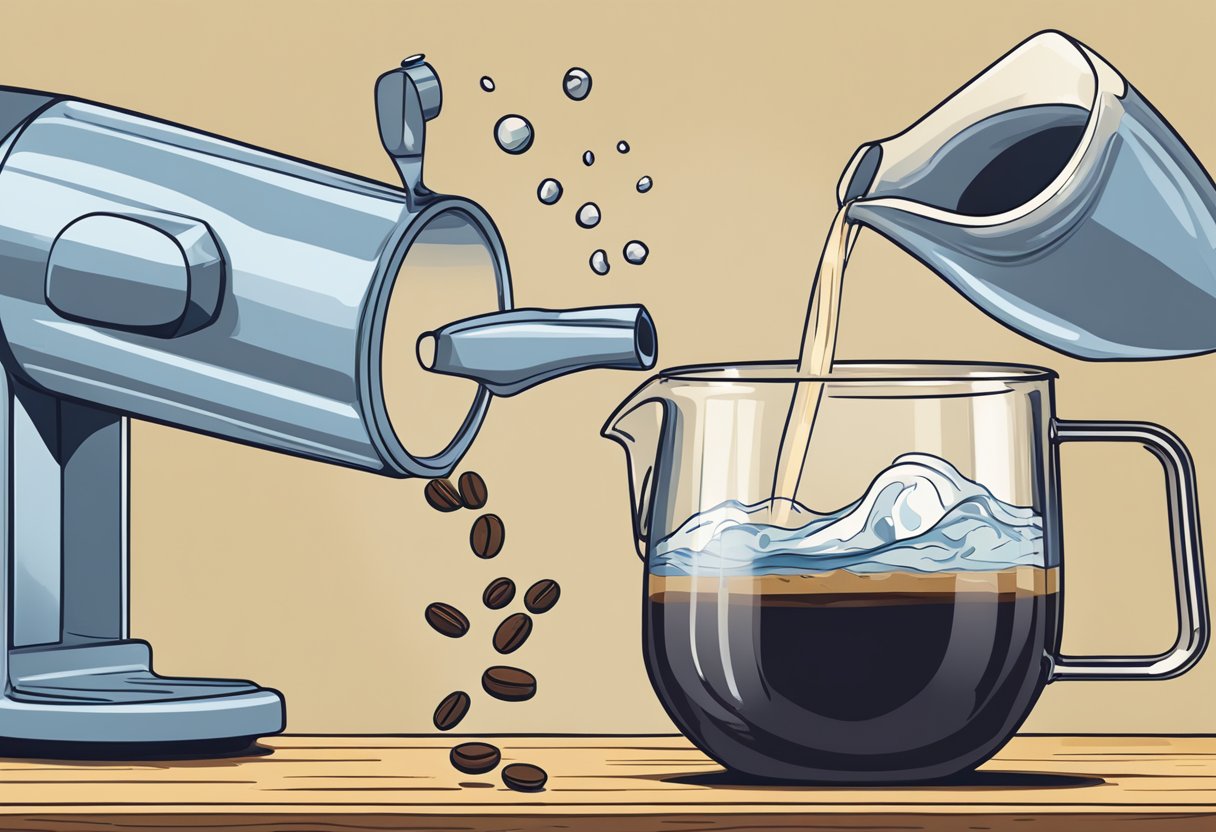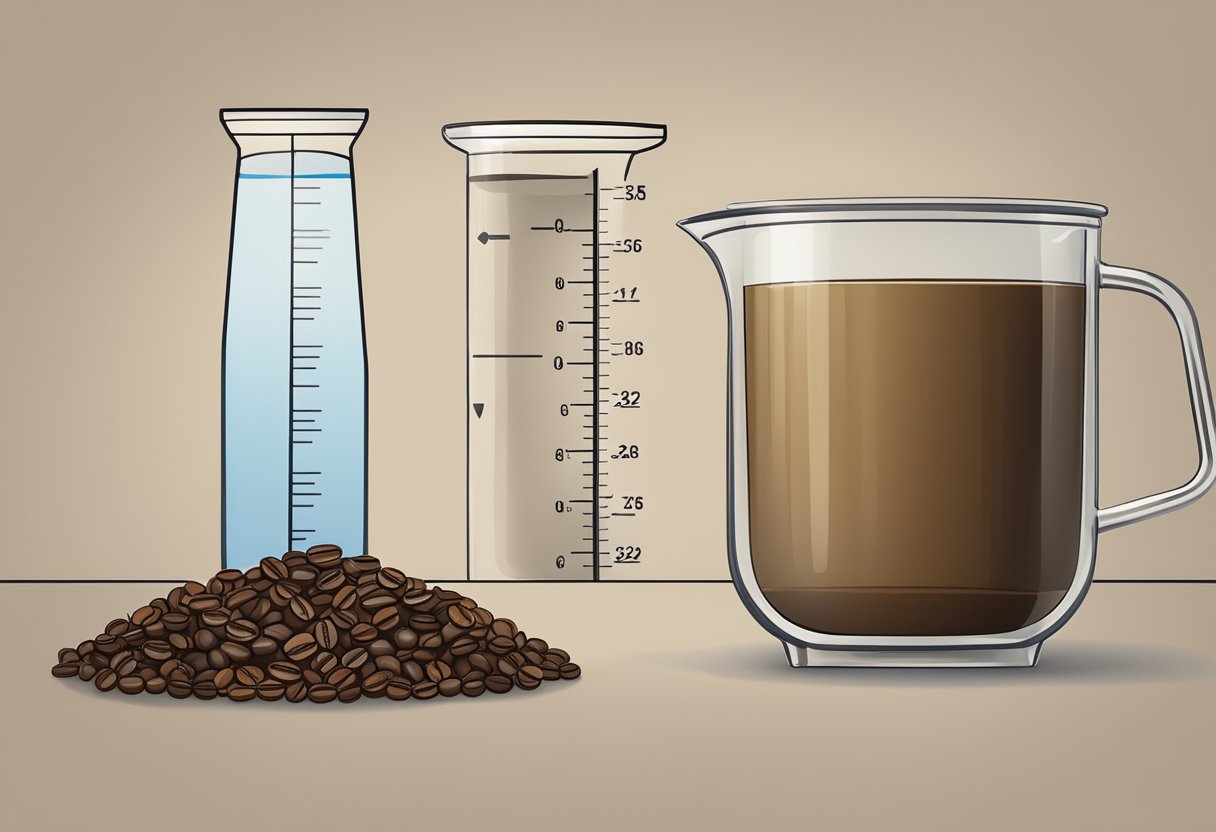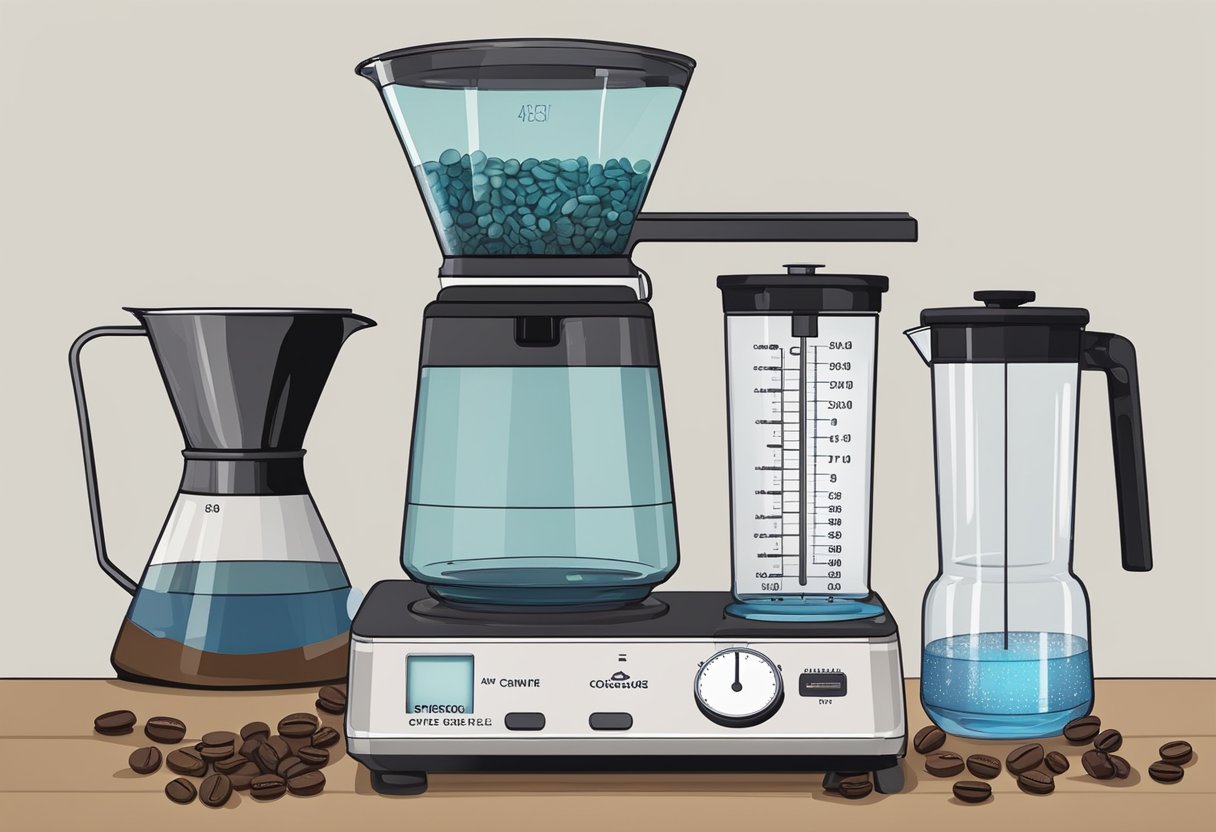1-800-982-4730
1-800-982-4730
When it comes to making coffee, getting the right ratio of coffee to water is crucial for a perfect cup. Many people wonder how much coffee to use when making a 32 oz pot of coffee. While the answer may vary depending on personal preference and brewing method, there are some general guidelines to follow.

According to a coffee ratio calculator, for a 32 oz pot of coffee, you will need 64 grams of coffee grounds. This is based on a 1:16 coffee-to-water ratio, which is considered a standard ratio for drip coffee makers. However, it's important to note that this ratio can be adjusted based on personal taste preferences.
Another factor to consider when determining how much coffee to use for 32 oz of water is the brewing method. For example, if using a French press, a coarser grind and a higher coffee-to-water ratio may be preferred. On the other hand, if using a pour-over method, a finer grind and a lower coffee-to-water ratio may be preferred. It's important to experiment with different ratios and brewing methods to find the perfect cup of coffee for your taste buds.

Coffee-to-water ratio is the amount of coffee grounds to water used to brew coffee. It is an important factor that affects the taste and strength of the coffee. The ratio is usually expressed in grams or ounces of coffee per cup or liter of water.
The ideal coffee-to-water ratio depends on personal preference and the brewing method used. A general guideline is to use 1 to 2 tablespoons of coffee grounds per 6 ounces of water, or about 2 tablespoons of coffee grounds per 8-ounce cup of water.
To calculate the coffee-to-water ratio, one can use a coffee ratio calculator or a coffee-to-water ratio chart. These tools help to determine the amount of coffee grounds and water needed to brew a specific amount of coffee of certain intensity. They also support different coffee brewing methods, such as French press, pour-over, and cold brew.
Some people talk about a golden ratio, an ideal number that makes the perfect cup of coffee. While that would make everything easier, it is also a little too simplistic. The golden ratio is a ratio of 1:2, which means one part coffee to two parts water. However, this ratio may not work for everyone, as different people have different tastes and preferences for their coffee.
In summary, understanding the coffee-to-water ratio is essential to making a great cup of coffee. It is important to experiment with different ratios and brewing methods to find the one that works best for you. Using a coffee ratio calculator or chart can help to simplify the process and ensure consistent results.

When it comes to brewing coffee, there are a variety of methods available, each with its unique impact on the final product. The following are some of the most popular brewing methods and how they affect the coffee's flavor.
Drip coffee is one of the most common brewing methods, and it involves pouring hot water over coffee grounds in a paper or metal filter. This method is known for producing a clean, smooth cup of coffee, but it can also result in a weaker brew if not done correctly.
The French press is a classic brewing method that involves steeping coffee grounds in hot water and then pressing them down with a plunger. This method produces a full-bodied, flavorful cup of coffee, but it can also result in a gritty texture if the coffee grounds are not coarse enough.
Cold brew is a popular method for making iced coffee, and it involves steeping coffee grounds in cold water for an extended period. This method produces a smooth, low-acid cup of coffee, but it can also take up to 24 hours to brew.
Pour-over is a precise brewing method that involves pouring hot water over coffee grounds in a cone-shaped filter. This method produces a clean, bright cup of coffee, but it can also be time-consuming and requires a bit of skill to master.
Espresso is a concentrated form of coffee that is made by forcing hot water through finely ground coffee beans under high pressure. This method produces a rich, intense cup of coffee, but it can also be tricky to master and requires a specialized machine.
The AeroPress is a relatively new brewing method that involves steeping coffee grounds in hot water and then using a plunger to force the coffee through a paper or metal filter. This method produces a clean, smooth cup of coffee, but it can also be time-consuming and requires a bit of practice to get right.
Siphon brewing is a unique method that involves using a vacuum to brew coffee. This method produces a clean, full-bodied cup of coffee, but it can also be challenging to master and requires a specialized brewing device.
The Chemex is a pour-over brewing method that uses a unique glass vessel and paper filter to brew coffee. This method produces a clean, bright cup of coffee, but it can also be time-consuming and requires a bit of skill to master.
The Moka Pot is a stovetop brewing method that uses steam pressure to brew coffee. This method produces a strong, flavorful cup of coffee, but it can also be challenging to master and requires a bit of trial and error to get right.
Turkish coffee is a unique brewing method that involves boiling finely ground coffee beans in a pot with water and sugar. This method produces a thick, rich cup of coffee, but it can also be challenging to prepare and requires a specialized pot.
The Hario V60 is a pour-over brewing method that uses a cone-shaped filter and a unique brewing device to brew coffee. This method produces a clean, bright cup of coffee, but it can also be time-consuming and requires a bit of skill to master.
Overall, the brewing method used can have a significant impact on the final flavor of the coffee. By understanding the unique characteristics of each method, coffee lovers can experiment with different brewing techniques to find the perfect cup of coffee for their taste preferences.

When it comes to brewing coffee, getting the right strength is crucial. The strength of coffee is determined by the amount of coffee grounds used in relation to the amount of water. To achieve the perfect cup of coffee, it is important to measure the coffee and water accurately.
One way to measure coffee is by weight using a kitchen scale. A general rule of thumb is to use 1 gram of coffee for every 15-18 milliliters of water. For example, for 32 ounces of water, one would need to use approximately 56-67 grams of coffee grounds. Using a scale ensures precision and consistency in coffee strength.
Another way to measure coffee is by volume using tablespoons or scoops. A standard coffee scoop typically measures 10 grams of coffee grounds. For 32 ounces of water, one would need to use approximately 6-7 scoops of coffee. However, the size of a scoop can vary, so it is important to use the same scoop every time for consistency.
The grind size of coffee also plays a role in strength. A finer grind size will result in a stronger coffee, while a coarser grind size will result in a weaker coffee. It is important to adjust the grind size based on personal taste preferences and the brewing device being used.
If the coffee is too weak, it may be under-extracted. This means that the water did not have enough time to extract the coffee's flavor and strength. To fix this, try using a finer grind size or increasing the extraction time. If the coffee is too strong or bitter, it may be over-extracted. This means that the water extracted too much flavor and strength from the coffee. To fix this, try using a coarser grind size or decreasing the extraction time.
Using a coffee calculator can also be helpful in determining the best brew ratio for a specific brewing device and personal taste preferences. The Specialty Coffee Association recommends a brew ratio of 1:15-1:18 for a standard cup of coffee. However, the best brew ratio can vary based on personal taste and the type of coffee beans being used.
In summary, measuring and adjusting coffee strength is essential in achieving the perfect cup of coffee. Using a kitchen scale, consistent scoop size, and adjusting the grind size can all help achieve the desired strength. It may take some experimentation and patience, but with the right tools and techniques, anyone can brew a delicious and flavorful cup of coffee.